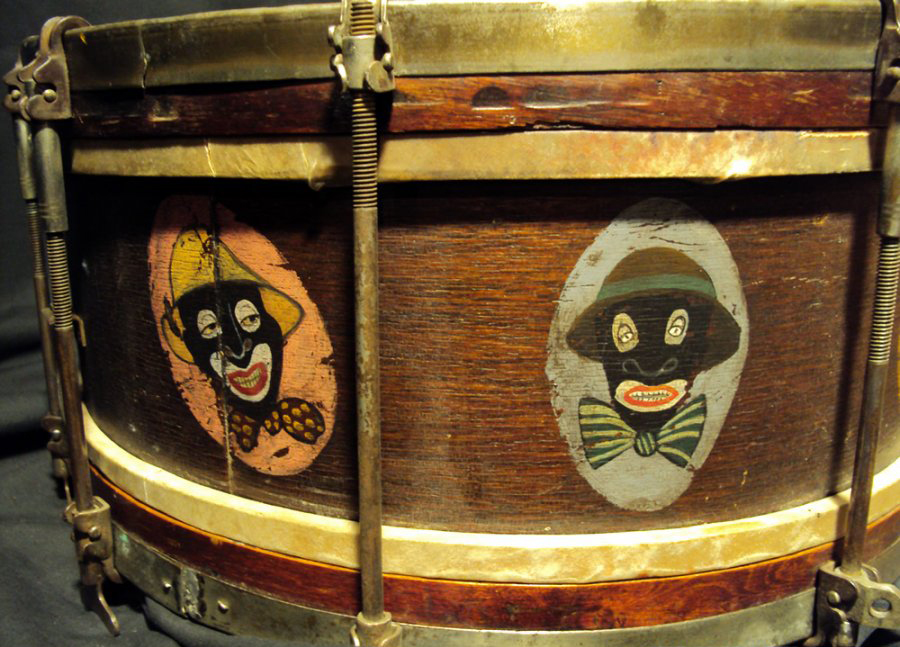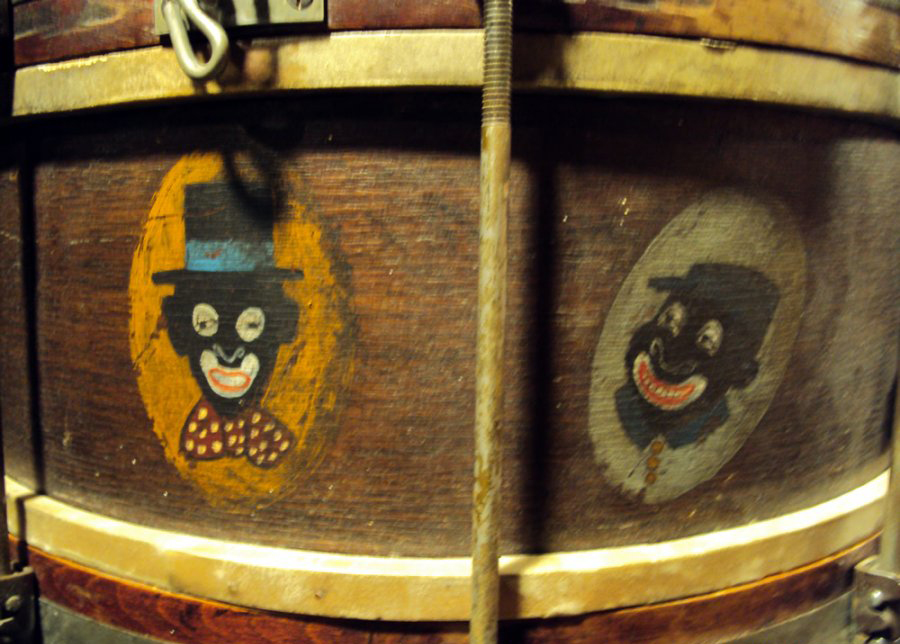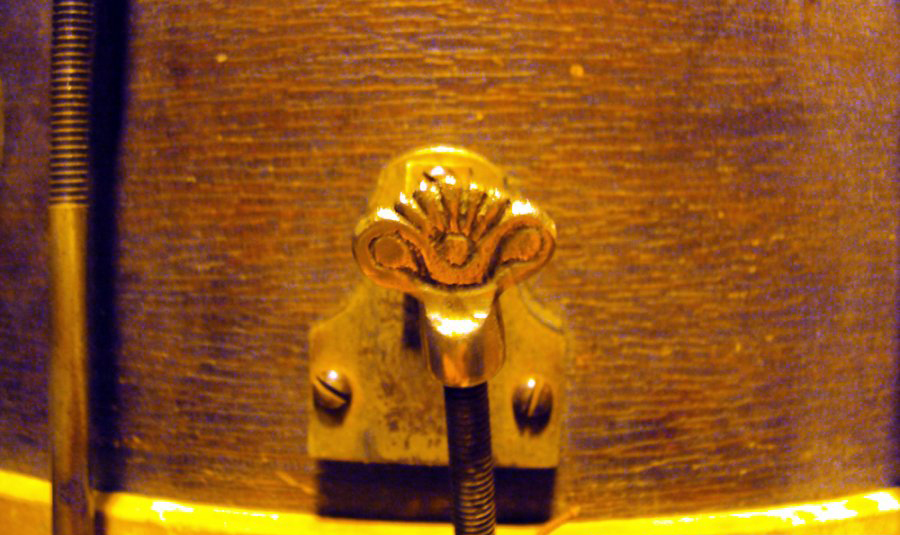Maker: J.W. Pepper & Son Circa: 1911 Dimensions: 6" (h) x 16" (dia.)
An incredible piece of American black memorabilia, this rare and one of a kind minstrel drum also speaks volumes as to the changing role of the drum from one of military communication to that of an exclusive tool of entertainment. Formally part of a large "Black Memorabilia" collection, this drum was indeed part of an early 20th century minstrel show. It was accompanied by a tambourine featuring the hand-painted, exaggerated face of a black male character known as "Tambo," that covered the entire surface of the calf skin head. No doubt just part of the show as the average performance consisted mostly of music and comedy. Beginning in the 1830's, the blackface minstrel show was the first distinctly American theater form and was at the very core of the rise of an American music industry. In the early decades it provided a window for white America to view black America. But in the end, early minstrel music and dance was not the true black culture: it was merely the white reaction to it.
Seven of the eight panels are hand painted with the face of a "darky" stock character in classic "black-face" make-up with shades of blue, white, yellow, and red. Of particular note is the panel painting of the stock character of a civil war soldier clad in blue, echoing the free black soldiers' many contributions of service at a time of great change in the relatively young American country. It also seems to beckon forth thoughts of a time of reconstruction as well as of the growing freedoms and changing attitudes that would culminate in what would become jazz music and beyond.
The other panels present a variety of clownish characters, all in cartoon-like images and vivid color suggesting that this drum was played in a carnival like atmosphere with parades and bandstand performances.
By the turn of the 20th century, the minstrel show was starting a gradual decline as vaudeville began to replace it in popularity. However, it still managed to survive into the 1920s as a professional form of entertainment, with amateur performances continuing well into the 1960s.
The condition of the drum is one of restoration with some parts still unaccounted for and the skins left un-repaired. The shell is in very solid condition and is made of a single ply of ash wood, typical for drum makers in this part of the country. The counter-hoops are solid maple and are augmented with sheet metal to protect the wooden hoops from the abuses of honest stick wear. Ten single tension, slotted metal tuning rods are reminiscent of an earlier, well established style of rod modified with a thumb screw attachment. A few of these thumb screw rods have been lost or are broken off at the top and have been temporarily replaced with period slotted tuning rods that use a specific key or a flat head screwdriver to adjust until the correct replacement parts are found. The metal tension rod mounted leg rest is missing, but the top hoop mounted belt hook is still present and in good condition, confirming the drums versatility from bandstand to parade ground. Some of the snare adjuster is missing but the scroll patterned thumb screw is in perfect order and is still attached to a set of wire snares which were to be considered as something relatively new at the time.
Inside the drum is a paper maker's label identifying James W. Pepper and his son, Howard E., as the makers of this drum. The label reads: "J.W. Pepper & Son / Manufacturers of / Drums, Musical Instruments, Music and Musical Merchandise / Thirty Third and Walnut Streets, Philadelphia, PA." The label has some small cracks and a few small tears but is fully legible and shows its age. This address and the style of hardware suggests the circa of this drum to be about 1911.
There is really no definitive evidence that the J. W. Pepper & Son Company actually made this drum as they were known to market drums made by other builders and have their label affixed to those drums at different times.
We may also never know who painted or played this incredibly unique piece of American culture, but what we are left with is a partial record of evidence of the history of the music and percussion of this country. Crossing the lines of collecting between vintage drums, black memorabilia, and American history in general, this drum will always be in great demand as it changes hands over the years and will always be a great investment. Coming at the very end of the American victorian era, it is reminiscent of a time of great change that helped to make drums of music more common than Drums of WAR!
From Lancaster County, PA Thoughts from the shop....
-Brian Hill





